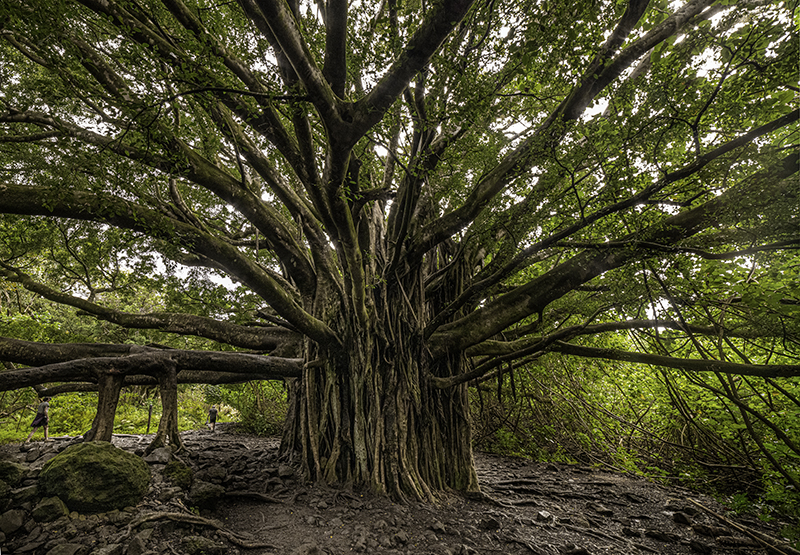Refurbishing Ash
Maui, Banyan Trees and How to Adapt When Tragedy Strikes

The wildfires on Maui are an absolute tragedy. While writing this, I read there are 55 confirmed deaths, thousands without power and full communities burned to the ground—and there may be more grim news on the way. My deepest condolences go out to those on the island and their families.
As President Biden and Hawaii Governor, Josh Green, note, the road to rebuilding will be long and the communities affected will be forever changed. Historic cultural centers, like Lahaina Town (once the capital of the Kingdom of Hawaii), have been all but reduced to ash.
What we can learn from the banyan tree
Unlike the evergreen trees I’m used to in Snoqualmie, banyans develop aerial prop roots, which are branches that sink into the ground and function like roots. As the tree grows, these prop roots can become indistinguishable from the primary trunk.
From this teamwork mentality of growth and resilience, we can learn that success, whether in our life or in our business, or any other area of life, isn't dependent on a single or even a few, primary trunks. Instead, each person is anchored and connected to create a strong and enduring network of people, one that can tackle any challenge that springs up. In a way similar to the banyan roots, new employees, when properly supported, can grow, develop and support other team members in time.
Ensuring this sort of culture takes both a strong dedication to mentorship from those initially in leadership positions as well as the right mix of team members. When a company gets the ratio right, it becomes stronger, more resilient than its individual members, a quality that will help keep business afloat in times of adversity.
Adaptation can be synonymous with resilience
As the National Guard and other responders sort through the remains of Lahaina and as reporters send back images of the destruction of both nature and manmade settlements, it seems there’s a lot of worry about the future of Lahaina’s banyan tree. Maybe the tree will live, or maybe it will die. If it does perish, it may not be its end.
Over 30 years ago, the primary trunk of a large banyan in India was struck by lightning. While the tree, as it had been known, died, its roots survived and have been springing to life ever since. The takeaway here is that sometimes we are dealt what would be a fatal blow, but with adaptation, and the right team, we can survive and even thrive. The key is understanding what needs to change to help us build back better rather than focusing on what is no longer an option.
Many reporters and locals have already noted the landmarks and cultural centers decimated by the fire cannot be saved—there is no refurbishing ash. Wondering how we will rebuild to the way things were might be the wrong question to ask. Maybe instead we should be asking what new roots will clutch, what new branches will grow in Maui and in our own ventures.
And while we’re asking these questions, maybe we on the mainland, many of us who have visited Maui and The Big Island, can ask how we can be support roots for those impacted by the fire—such as pitching in for disaster relief.


